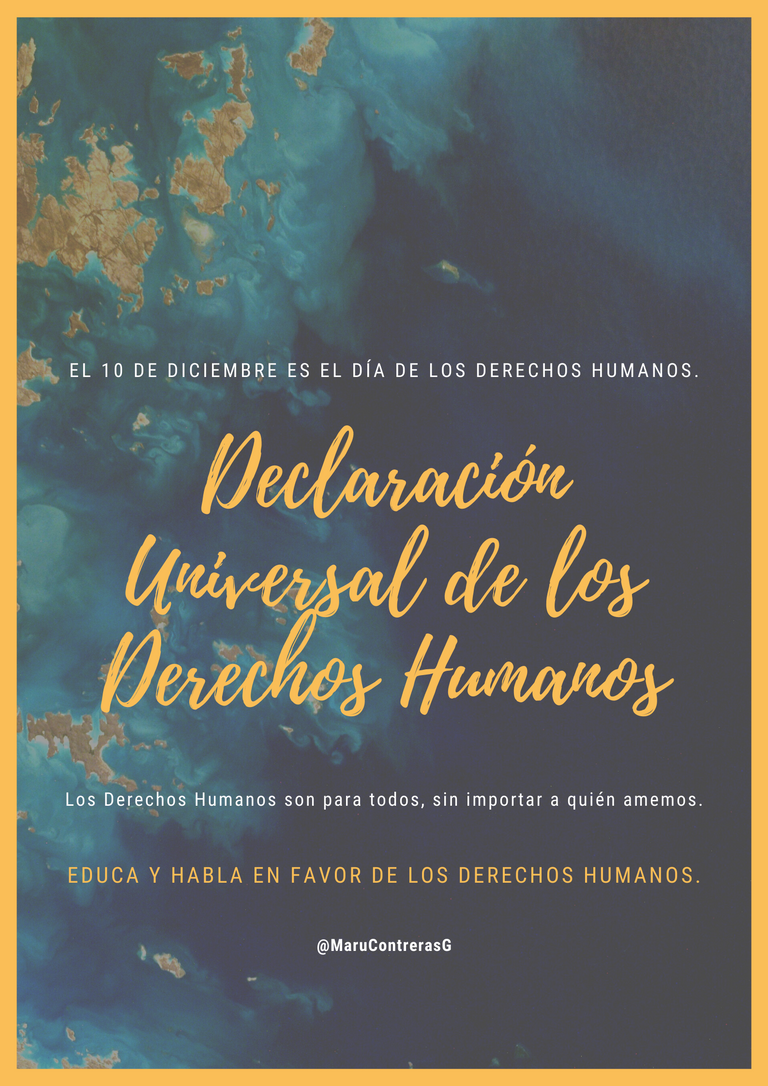
Las leyes, tratados y pactos internacionales obligan a que cada gobierno tome diversas medidas, para hacer que los mismos prevalezcan, también es importante señalar que ninguna persona o grupo, gobierno o institución, tiene derecho a vulnerar los mismos. Tomando en cuenta esto, Labrada, V. (1998). Señala que:
Finalizada la Segunda Guerra Mundial, en 1945, se elabora la carta de San Francisco para la creación de la Organización de Naciones Unidas. Los aliados occidentales habían mantenido ante la opinión pública que la defensa de la libertad de los Derechos Humanos constituye el motivo primordial que justificaba la intervención de los Estados Unidos en la contienda.
Por esta razón, los Estados Unidos trataron de incorporar a la carta de San Francisco una declaración universal de Derechos Humanos. Ante la oposición que surgió por parte de la unión soviética y de Gran Bretaña, el departamento de estado norteamericano abandonó este proyecto, pero influyó para que la carta se incluyera referencias o compromisos en materia de Derechos Humanos. (P.105)
La Declaración Universal de los Derechos Humanos es elaborada como una forma de unificar a las naciones en el respeto de los DDHH, la misma señala en su preámbulo según Labrada, V. (1998). que fue proclamada:
Como ideal común por el que todos los pueblos y naciones deben esforzarse, a fin de que tanto los individuos como las instituciones, inspirándose constantemente en ella, promuevan, mediante la enseñanza y la educación, el respeto a estos derechos y libertades, y aseguren, por medidas progresivas de carácter nacional e internacional, su reconocimiento y aplicación universales y efectivos, tanto entre los pueblos de los Estados Miembros como entre los de los territorios colocados bajo su jurisdicción. (Pp. 215 – 216).
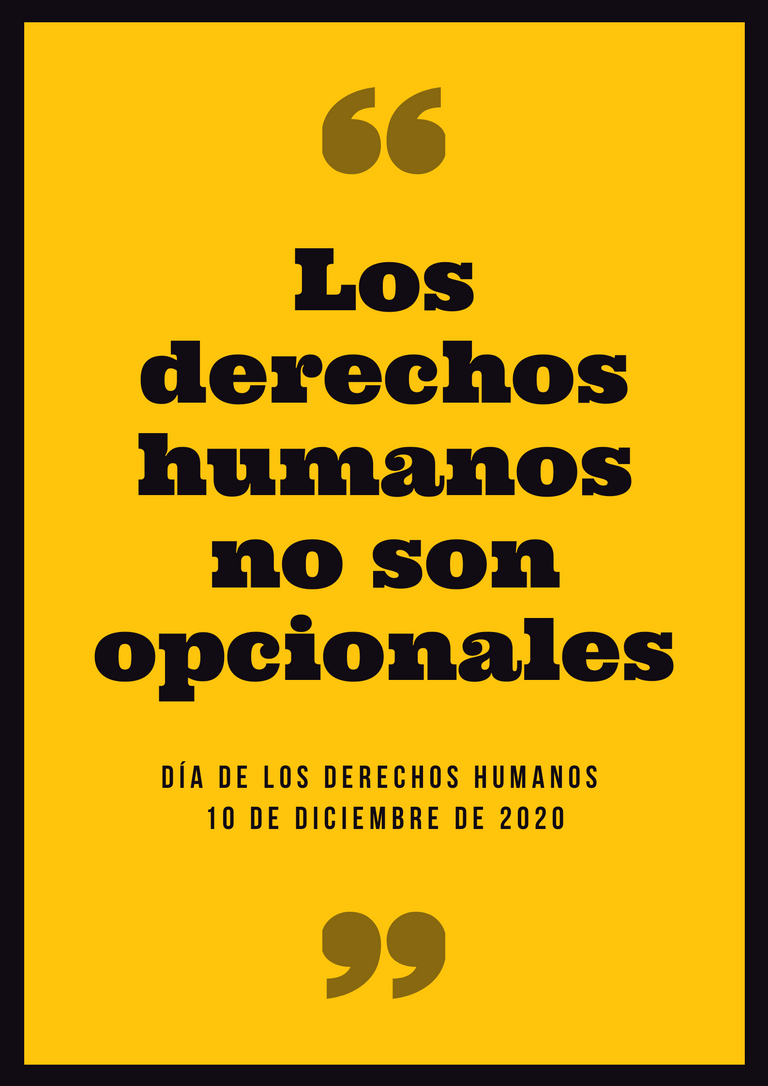
Tomando en cuenta lo anterior, el autor indica que se trata de la primera expresión, con pretensión de validez internacional, que coloca de relieve la certeza de que la producción Nacional de los Derechos Humanos resulta insuficiente e inoperante. Por lo cual, hay que ir a un reconocimiento y a un resguardo de carácter internacional para concebir positivo el ejercicio de los diferentes Derechos.
Por otra parte, cabe resaltar la política internacional que existía en aquel momento, Labrada, V. (1998). señala que:
Después de la guerra quedó determinada por la existencia de dos bloques enfrentados: occidente con Estados Unidos a la cabeza y la Unión Soviética; ambos se disputaban la hegemonía del mundo. Razones defensivas, de seguridad y de economía potenciaron la llamada carrera de armamentos. Todas estas circunstancias, apuntadas de forma esquemática, ayudan a valorar las dificultades que hubieron de superar los redactores del texto de la Declaración, por lo que se puede considerar que la elaboración del mismo supuso un cierto éxito. No pudo aprobarse como tratado multinacional a causa de los problemas de soberanía indicados, por lo que quedó en simple Declaración. El balance fue de 48 votos a favor y 8 extensiones correspondientes a los países del Este, Unión sudafricana y Arabia Saudí. Por las razones expuestas, el hecho de que no se produjera ninguna oposición se considera un dato muy favorable. (P. 107).
Es relevante hacer mención de todo lo anteriormente señalado para analizar el contexto en el que se dio la elaboración de esta declaración y así conocer a fondo las características que rodearon la misma. Por otro lado, es necesario acotar la estructura de la Declaración Universal de DDHH, que se puede evidenciar en la Introducción a la teoría de los Derechos Humanos de Labrada, V. (1998), donde se observa que consta de:
Un preámbulo con siete considerandos, seguido de una declaración aprobatoria. Los treinta artículos de los que consta se pueden dividir en la siguiente forma: Principio generales (arts. 1 y 2). Derechos civiles y políticos (arts. 3 al 21). Derechos económicos y sociales (arts. 22 al 25). Derechos culturales (arts. 26 y 27). Por último, recoge las relaciones entre el ciudadano y la comunidad internacional (arts. 28 al 30).
En cuanto a la fundamentación filosófica de la Declaración, se ha tratado de defender que no se identifica con ninguna filosofía determinada, que se ha elaborado por encima de ideologías creencias o culturas, calificándola como un texto humanista transideológico. (P. 108).

Los Derechos Humanos hacen que cada individuo sea reconocido y protegido, estos rigen la manera en que las personas conviven en sociedad, así como la relación que estos mantienen con instituciones gubernamentales y los deberes a su vez, que los gobiernos tienen con la sociedad en general.
A pesar de estar en pleno siglo XXI y con la globalización en pleno auge, aún existen países, sobre todo en Oriente, que siguen con un sistema legislativo y creencias generacionales retrogradas que atentan contra la intrgridad de las personas, sobre todo de niñas y mujeres, lo que da mucho que analizar sobre lo que le falta a la humanidad para que llegue a ser compasiva y benevolente y sobre todo respetuosa con la dignidad de todo ser humano.
Además de esto, debemos sumarle la discriminación y xenofobia que aún sigue siendo parte del día a día en muchos países del mundo y que pasaran muchos años, para que el ser humano comprenda, que todos somos por igual parte del mundo y el lugar donde naciste o tu color de piel, no te hacen menos persona, menos ser humano o insignificante. Siempre he dicho que los seres humanos somos del mundo y el lugar donde naces, eso solo eso, un lugar, que no debe delimitar que disfrutes de las maravillas de este hermoso planeta, sin que importen las fronteras.

Referencias Bibliográficas:
Labrada, V. (1998). Introducción a la teoría de los Derechos Humanos: Fundamento. Historia. Declaración universal de 10 de diciembre de 1948. Civitas, S. A.: Madrid, España.
Edición propia de imágenes en CANVA
Y recuerden: "La fuerza de tus convicciones determina tu éxito, no el número de tus seguidores" RL.
Maru.
VERSION ENGLISH
UNIVERSAL DECLARATION OF HUMAN RIGHTS
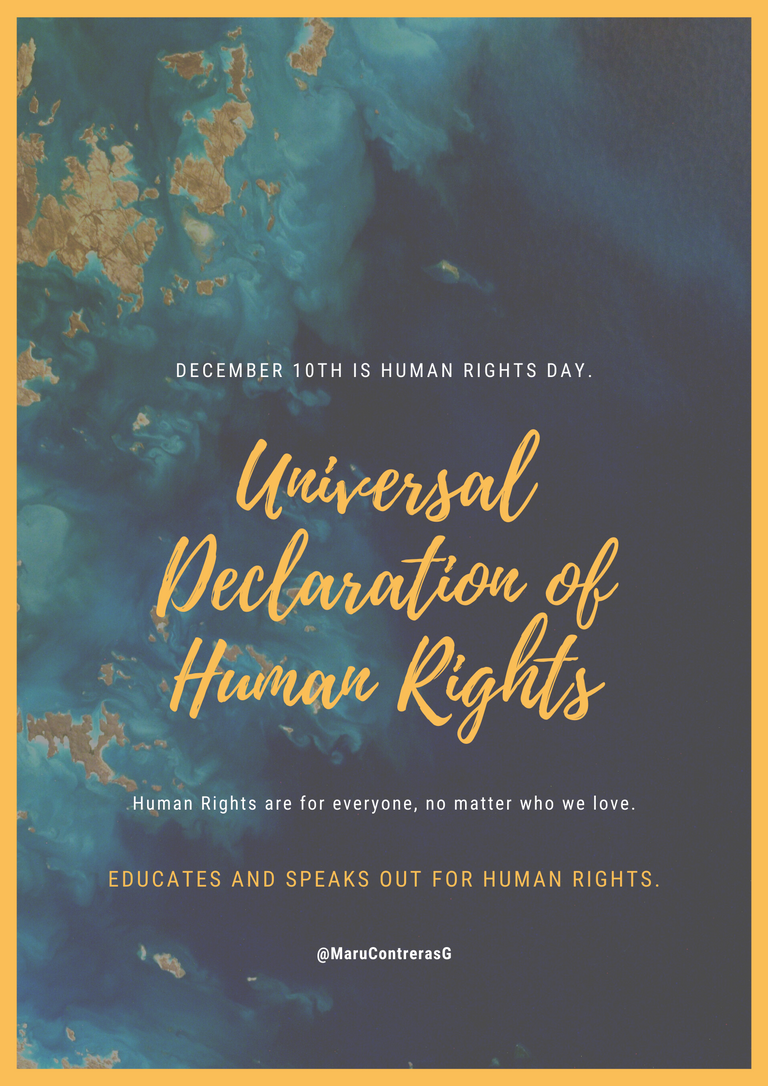
The laws, treaties and international covenants oblige each government to take various measures to ensure that they prevail. It is also important to note that no person or group, government or institution, has the right to violate them. Taking this into account, Labrada, V. (1998). It points out that:
After the Second World War, in 1945, the San Francisco Charter was drawn up for the creation of the United Nations. The western allies had maintained before the public opinion that the defense of the freedom of the Human Rights constitutes the primary reason that justified the intervention of the United States in the conflict.
For this reason, the United States sought to incorporate a universal declaration of human rights into the San Francisco charter. In the face of opposition from the Soviet Union and Great Britain, the US State Department abandoned this project, but influenced the letter to include references or commitments to human rights. (P.105)
The Universal Declaration of Human Rights is elaborated as a way to unify nations in the respect of human rights, it indicates in its preamble according to Labrada, V. (1998). that it was proclaimed:
As a common standard of achievement for all peoples and all nations, to the end that every individual and every organ of society, keeping this standard constantly in mind, shall strive by teaching and education to promote respect for these rights and freedoms and by progressive measures, national and international, to secure their universal and effective recognition and observance, both among the peoples of Member States themselves and among the peoples of territories under their jurisdiction. (Pp. 215 - 216).
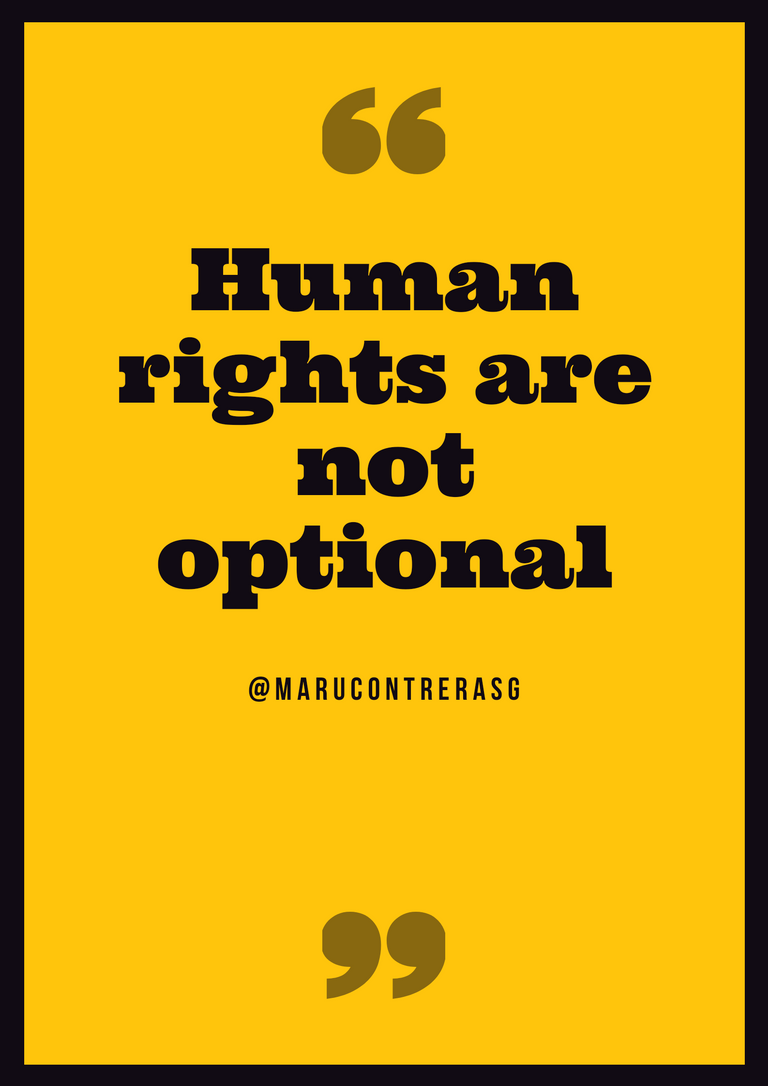
Taking into account the above, the author indicates that this is the first expression, with a claim of international validity, which highlights the certainty that the national production of human rights is insufficient and inoperative. Therefore, it is necessary to go to an international recognition and protection to conceive positively the exercise of the different rights.
On the other hand, it is necessary to emphasize the international policy that existed at that time, Labrada, V. (1998). points out that:
After the war it was determined by the existence of two confronted blocks: the West with the United States at the head and the Soviet Union; both disputed the hegemony of the world. Defensive, security and economic reasons encouraged the so-called arms race. All these circumstances, outlined in a schematic way, help to assess the difficulties that had to be overcome by the drafters of the text of the Declaration, so it can be considered that the elaboration of the Declaration was a certain success. It could not be adopted as a multinational treaty because of the sovereignty problems indicated, so it remained a simple Declaration. The balance was 48 votes in favour and 8 extensions corresponding to the countries of the East, the Union of South Africa and Saudi Arabia. For the above reasons, the fact that there was no opposition is considered a very favourable fact. (P. 107).
It is relevant to mention all the above in order to analyze the context in which this statement was made and thus to know in depth the characteristics that surrounded it. On the other hand, it is necessary to delimit the structure of the Universal Declaration of Human Rights, which can be seen in the Introduction to the Theory of Human Rights by Labrada, V. (1998), where it is observed that it consists of:
A preamble with seven recitals, followed by an approving declaration. The thirty articles of which it consists can be divided as follows: General principles (Articles 1 and 2). Civil and political rights (arts. 3 to 21) Economic and social rights (arts. 22 to 25) Cultural rights (arts. 26 and 27) Finally, it covers the relationship between the citizen and the international community (arts. 28 to 30).
With regard to the philosophical foundation of the Declaration, an attempt has been made to defend that it is not identified with any particular philosophy, that it has been elaborated above ideologies, beliefs or cultures, qualifying it as a transideological humanist text. (P. 108).
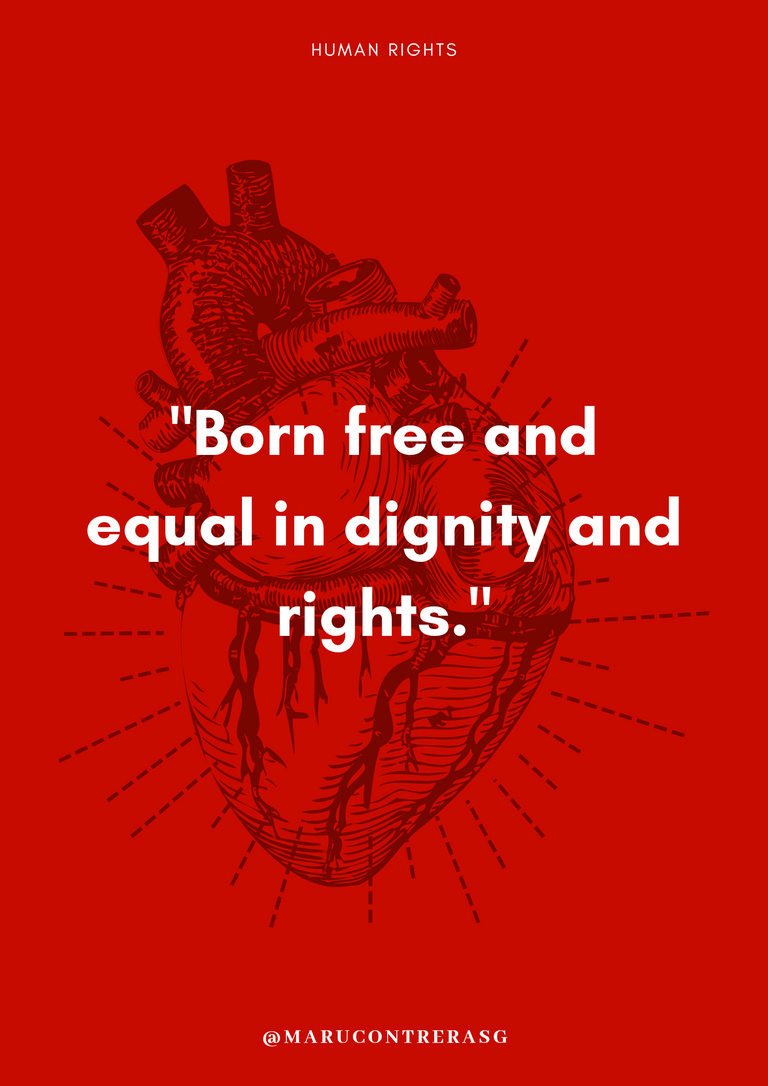
Human rights make each individual recognized and protected, they govern the way people live together in society, as well as the relationship they have with government institutions and the duties, in turn, that governments have with society in general.
Despite being in the 21st century and with globalization on the rise, there are still countries, especially in the East, that continue to have a backward looking legislative system and generational beliefs that threaten the intrgrity of people, especially girls and women, which gives much to analyze about what humanity lacks in order to become compassionate and benevolent and above all respectful of the dignity of every human being.
In addition to this, we must add the discrimination and xenophobia that is still part of everyday life in many countries of the world and that many years will pass, so that the human being understands, that we are all equally part of the world and the place where you were born or your skin color, does not make you less of a person, less of a human being or insignificant. I have always said that human beings are of the world and the place where you are born, that alone, a place, which should not limit you to enjoy the wonders of this beautiful planet, regardless of borders.

Bibliographical references:
Labrada, V. (1998). Introduction to the theory of Human Rights: Fundamento. History. Universal Declaration of 10 December 1948. Civitas, S. A.: Madrid, Spain.
And remember: "The strength of your convictions determines your success, not the number of your followers" RL.
Maru.
Congratulations @marucontrerasg! You have completed the following achievement on the Hive blockchain and have been rewarded with new badge(s) :
You can view your badges on your board and compare to others on the Ranking
If you no longer want to receive notifications, reply to this comment with the word
STOPDo not miss the last post from @hivebuzz:
Vote for us as a witness to get one more badge and upvotes from us with more power!